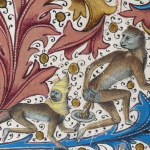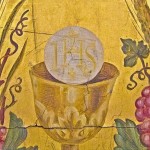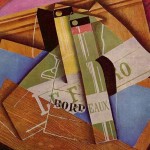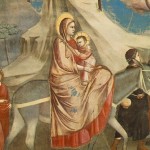Having already established that racism is a sinful vice which has absolutely no place within the Body of Christ, I will now focus my attentions in a less abstract manner. I have long struggled with the figure of Christopher Columbus (among other things related to the Catholic Church in the New World) for some time. Not necessarily because I harbored any which hatred towards his person, but because of the repercussions (both good and bad) of a number of his policies on my Taino forebears. A group of people from the Arawak nation who inhabited the Greater Antilles, who though not particularly advanced were very peaceable and received the Spanish on very good terms. Nevertheless, they met their demise not exclusively via diseases of which they had no immunity to, but also the barbarous exploitation of a people whom they had no historic ties nor obligations toward.
It was through much grappling, pain, sorrow, and tears that I came to make peace with him and the aftermath of the imperial and colonial institution. Now, that doesn’t mean that I’ve become a fanboy of his or the institution, but that I could personally restore the image of Christ present in His person, in spite of His imperfections and shortcomings (of which I too have many). For to see Christ in one’s fellow man is to see the Gospel played out in Him and through Him, in the unity of the Holy Spirit. It is to see Christ take flesh, be born, to live (and all that entails), to die, and meet one’s eternal reward. As such, my issue was not with Columbus, per se, but more with the fact that that same recognition and honoring of that most basic image of Christ was denied a portion of my forebears through a series of pseudo-theologizations which would call into question their very humanity.
The first of these controversies came to a head within The Valladoid Debates, where not only their humanity came into question, but in like manner justifications for their subjugation, enslavement, forfeiture of their sovereignty as a people and finally, justifications for use of force to bring about their conversions. These disputations would not only provide the foundations for modern human rights–Thanks in large part to Br. Bartolome de Las Casas, Br. Francisco de Vittoria, and countless others whose complying with grace provided a means by which God’s justice might prevail, for those suffering the consequences of such unjust discrimination–but it would in like manner provide the foundations for a very particular species of materialism that would take root in the West. A materialism which would reduce individuals of distinct races to castes on the basis of accidental qualities with particular apriori essentialized value judgments attributed to their person, which sought to maintain an artificial semblance of a rightly ordered society sutured by social sin.
Dietrich con Hildebrand rightly made the following observation regarding the full implications of said ideology in 1930’s Germany:
Anyone with the slightest sensitivity…cannot fail to recognize the nature of National Socialism: naturalistic, antagonistic to the things of the spirit, and based on a materialism of blood….The deeds of the National Socialists truly correspond to the spirit of the Antichrist.
Now, while I will not make the categorical error of conflating the founding principles of each system of governance, I do not believe that I would be erring in comparing the similarities informing the premise of their respective racially stratified outlooks on society, where as previously mentioned, all men are were reduced to their nature. Now, while the prospect of racial mixing was anathema to the Nazis, there are those who would counter that the Spanish caste not only allowed interracial unions, but practically incentivized them. This is indeed true, but only superficially. Closer inspection would reveal that in order for such a system to function, there would need to be an established and consensual hierarchy of the races, with a superior race at the top, and those subordinate to it through the various degrees of proximity to itself. As such, mimetic desire and rivalry came to be embedded within the castes. For with each degree of mixing and its relative proximity to members of the higher and lower races, so too was a progressive divide and hierarchy introduced between members of lower castes, as each sought to further distance themselves from those born into what had been deemed inherently inferior estates, on the basis of naturalistic materialism.
Consequences of which holy men and women amongst the Church’s Saints and Blesseds were not immune from. I have mind the case of both St. Martin de Porres and Blessed Henriette Delille. St. Martin de Porres who was denied admittance into the Dominican Order on the basis of his African heritage, who solely by means of his father’s intervention (a Spanish nobleman) sought that his son (illegitimate, for he was not recognized as such under the law) might be granted entrance into the Dominican Order in Peru. For though Martin was of mixed heritage and the son of nobleman, his appearance betrayed him. He was treated as no different than if he were a pure sub-Saharan African imported to the colonies to be sold as a slave, an episode which almost played out in his own life, wherein he offered to be sold as a slave when his community had fallen into debt. On more than one occasion he was mocked for his mixed ancestry and his parentage.
Blessed Henriette Delille, on the other hand, was born into the plaçage system wherein black, Amerindian, and women of mixed heritage entered into a less than formal “common-law marriage” which for lack of better term referred to a class of kept women, who while not being formally recognized as spouses, enjoyed some of the associated privileges of society. Henriette objected to perpetuating such a system, for not only did it undermine the Church’s teaching on marriage, but it simultaneously demoralized those groomed within said system. She went on to found The Sisters of the Presentation (Now known as The Sisters of the Holy Family) to tend to the needs of the poor, the ill, the free and enslaved, and took measures for the instruction of both children and adults. She was opposed in her work by her brother Jean, who believed that her work endangered his and his family’s societal position for it exposed their black roots. He and Henriette were both octoroons who within the system of Colorism were what would be called “white passing”.
As such, they amongst a literal handful of Saints descended of slaves in this hemisphere who put on Christ to ransom those tethered by the social sin of racism. While I myself am by no means a Saint and am thus not fit to compare my experiences to the heroic virtue they exercised, have experienced in my own capacity the fruits of said enterprise, both by means of observation and personal encounters. Nevertheless, there never is quite a means by which you are made ready for it. This is most especially true of the at times disparaging remarks circulated amongst my own fellow co-religionists on matters of race and racism which is indeed quite alienating and isolating for someone such as myself who is of mixed racial and ethnic heritage.












